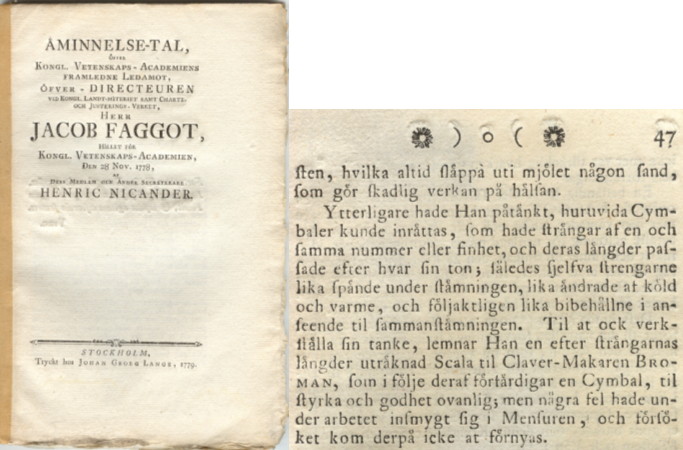Strings according to the Royal Swedish Academy of Science
The idea in the Academy was that science should be used to produce instruments sounding better and being more stable than imported foreign instruments. One reason for this interest could have been the import restrictions introduced in Sweden in 1756, the same year as Jacob Faggot's presentation of the ideas.
The scale, the term used for the sounding string lengths and string thicknesses, was considered important. The proposed scale is Pythagorean down to C, i.e. the sounding string lengths are doubled for each octave. If the scale had continued down to FF the iharpsichord would have been too long. The 4-foot strings also follow the same Pythagorean scale.
There are no string gauges showing the string thicknesses. According to the Academy all strings should be of the same material and of the same thickness. Where the scale is Pythagorean all strings will have the same tension and thus were supposed to stay in tune with each other even if temperature changes affected the pitch. Variations in humidity, however, play an even greater role in tuning instability and the behaviour of the instrument must have been a disappointment for the Academy. This is corroborated by the obituary by Henric Nycander published in 1779, when Jacob Faggot died,. He was the man in the Academy who had been responsible for the ideas. Apparently they never understood why the instrument failed, as mistakes in the scale were supposed to be the reason. Harpsichord makers knew what was wrong with the ideas, but hey were never asked.


